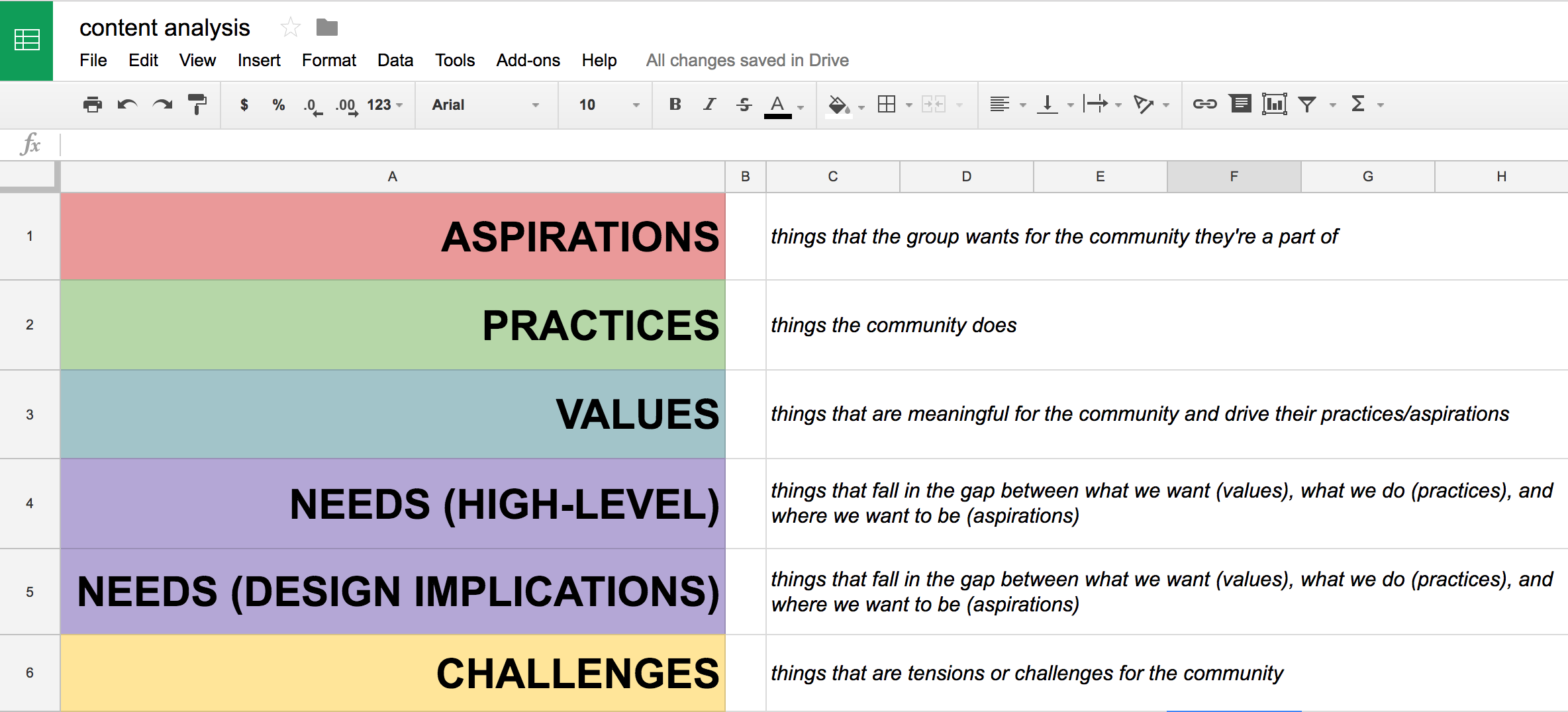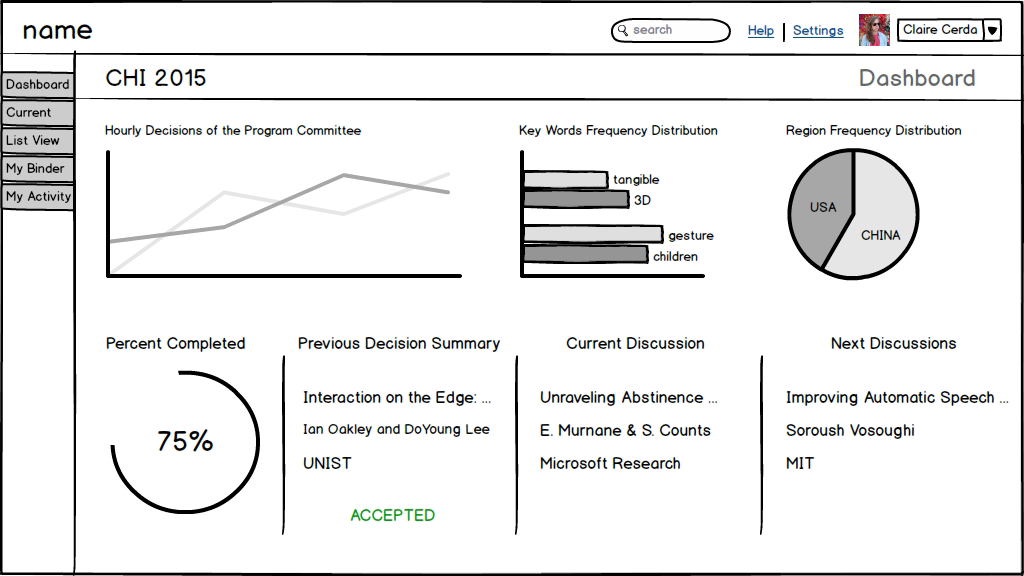Problem statement
How might we leverage tangible user interfaces and multimedia devices to help improve communication and facilitate complex decision-making?
Project description
Co-located, collaborative meetings are becoming increasingly expensive and complicated to coordinate especially in our increasingly global world. However, in-person meetings serve important functions: they are spaces where important and influential decision-making occurs and also meaningful spaces that foster mentorship, education, and interdisciplinary thinking. My research focused on augmenting co-located, collaborative decision-making through a smart meeting space.
I conducted qualitative interviews and ethnographic style observation of three collaborative domains: conference program committees, college admissions panels, and grant awarding panels. Based on my findings, I identified design requirements for a multi-device, interactive, smart meeting space that integrates personal devices with large interactive surfaces. I outlined design requirements, designed a system of devices, sketched wireframes of user interfaces, and presented my findings to key stakeholders of the project.
Methodology
- 16 interviews: 14 from academia and 2 from industry
- Foundational user research and concept development
- Qualitative research: interviewing and participant observation
- Snowball sampling
- Content analysis to understand patterns and trends within data
Skills required
- Oral and written communication
- Writing protocols and discussion guides
- Good interview techniques: not leading the interviewee, asking probing questions, maintaining focus on the protocol
- Organizing notes, audio recordings, and summaries
- Generating insights from qualitative data
- Big picture thinking and technical execution
- Self-discipline and self-management of project timeline, strategy, and execution
- Working with clients
Tools used
- Skype
- Audio recording applications
- Pencil & paper
- Google Drive
- Balsamiq
- Adobe Creative Suite
Project artifacts and process
Project involvement
I led the research on this project, conducted all of the interviews, designed and re-designed the protocol, recruited research participants, synthesized and analyzed data, outlined the design requirements, designed the user interfaces for the devices, and presented findings to stakeholders for the conference room of the future.
Collaborators
This project is a collaboration between myself, Orit Shaer, professor of Human-Computer Interaction at Wellesley College, and Michael Muller, Researcher and Master Inventor at the Cognitive User Experience group of IBM Research and the IBM Center for Social Software. Both Orit and Michael provided mentorship throughout my research process. They helped introduce me to the domains I studied, taught me about grounded theory methodology for data analysis, introduced me to potential research participants, and helped add valuable context and narrative to my findings.
Impact of project
The design requirements outlined as part of this project laid the foundation for augmenting co-located, collaborative decision-making domains. A few use cases for this research include conference program committee meetings, grant awarding panels for the arts, and undergraduate/graduate admissions panels. This project also had significant contributions to the field of Human Computer Interaction including:
- establishing a foundation for designing a seamless, multi-device environment to support co-located, collaborative decision-making domains
- supporting different collaboration styles in large co-located teams (with 8-12 participants)
- helping improve processes that support participants of co-located meetings as they establish common ground and reduce social stereotypes
Students in the Wellesley College HCI lab have continued the project and are developing a state of the art lab of tangible user interfaces to continue testing out hypotheses and design requirements articulated as part of this project.
Deliverables
Developed design requirements for leveraging large, tangible user interfaces. Presented actionable recommendations and prototypes to Cognitive User Experience group of IBM Research.
More projects
Interested in seeing more projects I've worked on?
Questions
Do you have any questions about this project? Please send me a note and I'd be happy to discuss!












